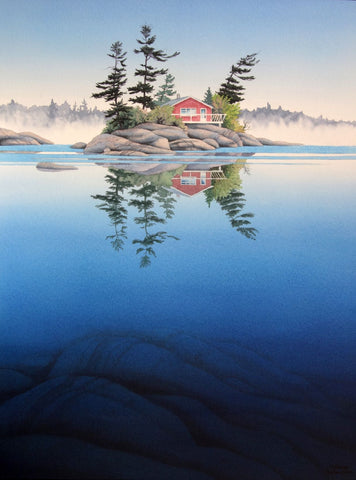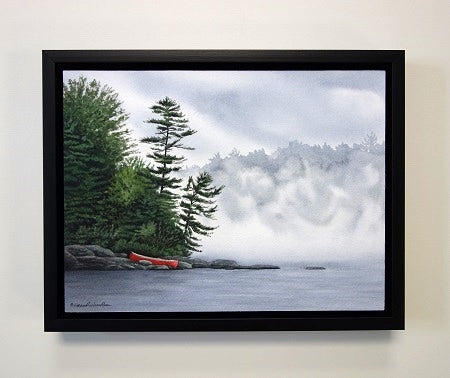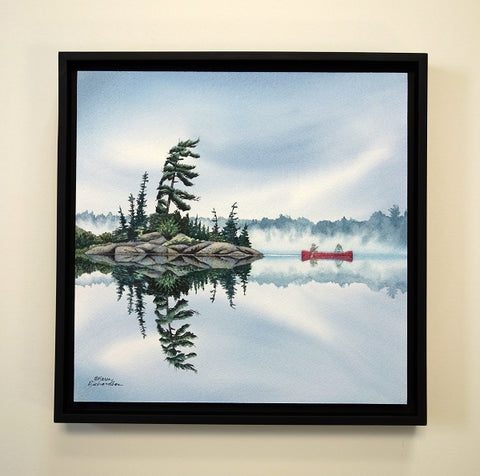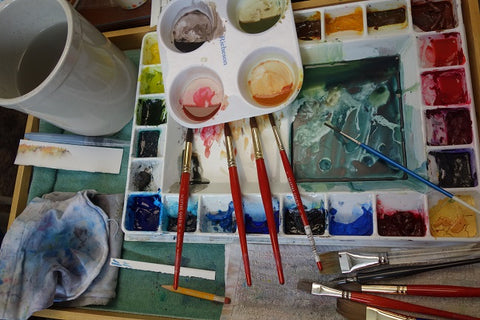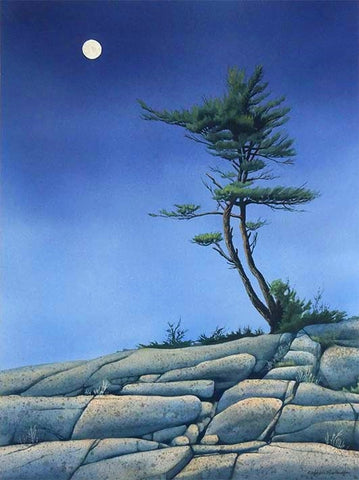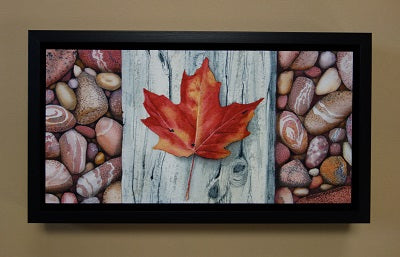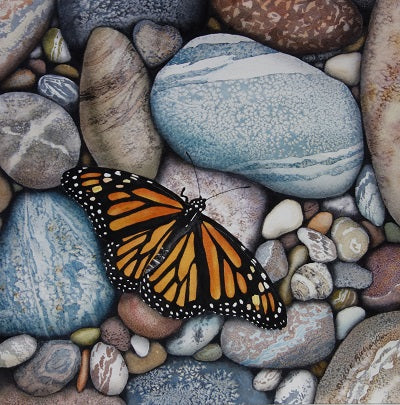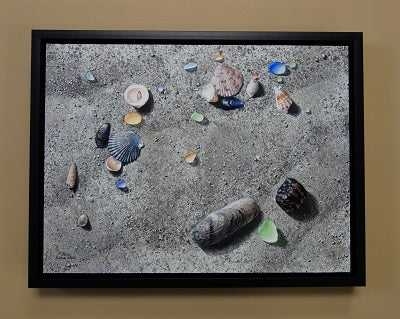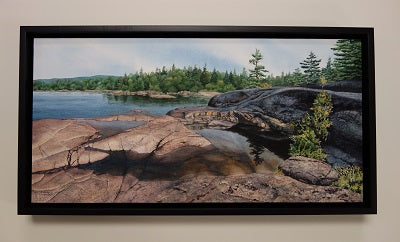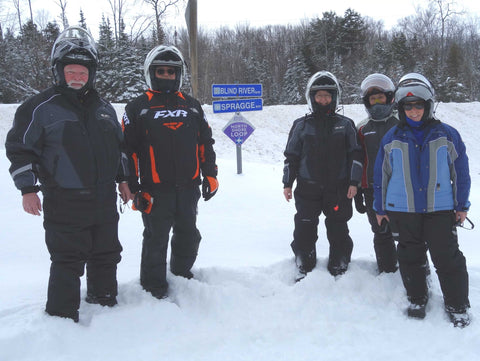
This year for our Valentine's anniversary, my husband and I and two other couples enjoyed a 4-day 800-km snowmobile tour through the Algoma region. This part of northern Ontario lies north of Georgian Bay and Lake Huron, between Sudbury and Sault Ste. Marie. In the photo above, he and I are standing closest to the trail sign.
The 3 couples all towed snow machines from home and gathered in Espanola where we stayed overnight and parked our trucks and trailers for the duration of our snow adventure.
Below is a photo of our machine, which has a GPS navigation system, two gas tanks, and room for both of us plus 3 pieces of waterproof luggage. I ride on the very comfortable back seat which, along with my hand grips, helmet visor and vest, is heated electrically. Yes I'm spoiled.

Our first day on the trails we rode from Espanola to Blind River. The morning trails were icy but the afternoon brought a welcome snowfall. However, with a foot of fresh powder and reduced visibility due to strong winds, we occasionally lost sight of the groomed trail and bogged down in 3 or 4 feet of soft snow (shown below). You can see our friend is up to her thighs in snow and the back end of her machine is buried deeply.

We got to practice digging out our machines several times that week, whenever we mistakenly got off of the groomed trail. We developed a routine - clear snow away from underneath the front of the buried machine, then pull hard on the skis while another person presses the throttle. It takes at least 3 people about 10 to 20 minutes of hard work to retrieve a buried machine and get it back on the trail. You can see the process underway in the photo below. Many hands make light work...

The second day we snowmobiled from Blind River to Bruce Mines. The fresh snow made for excellent riding conditions. One of the local old-timers we met at a restaurant mentioned that he had not seen this much snow in decades and that the previous winter there was not enough snow for snowmobiling. We were glad to hear we picked a good year to visit Algoma for some winter fun. Below is a photo of my husband and me on our snowmobile.
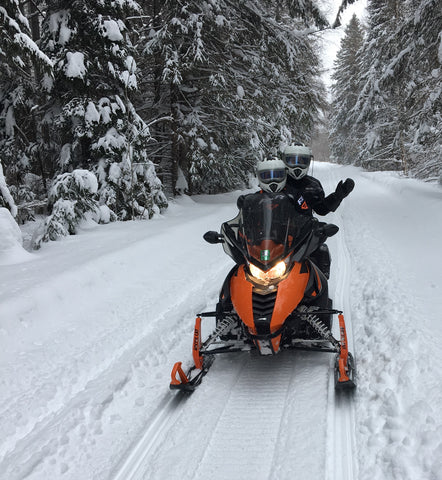
Occasionally our group stopped on the trail to stretch our legs, bask in the winter wonderland scenery, and enjoy cups of hot chocolate from our thermoses. We carried trail food for snacks (such as trail mix, chocolate bars, cheese, water) and equipment for emergencies (saws, tow ropes, first aid kit, space blankets, cell phones, tools, etc). Snowmobile trips are more like safaris than road trips. My husband and I are on the left in the photo below.

On the third day we rode from Bruce Mines to Elliott Lake. I took the photo below from our machine, which was at the back of our group of 5 snowmobiles.

We were stopped on the trail because we came upon a herd of deer (shown in a close up below). Fortunately they were curious about us and stayed still long enough for us to take several photos.

Groomed snowmobile trails provide easy travel routes for lots of wildlife. We saw tracks of deer, moose, rabbit, fox, and wolf during our adventure.
The Algoma snowmobile trail system was mostly well-mapped and marked with trail directional signs and periodic billboard maps, as shown below. We also had printed trail maps and digital maps on our GPS. Sometimes we had to call on all our resources to determine our way when the route was unclear. That is just part of the adventure of multi-day snowmobile trips in unfamiliar territory. We got to exercise our problem-solving skills as well as our muscles.

The trail system had a series of tiny warm-up huts with outhouses like those shown below, which we found useful from time to time. Note the snow load on the roof.
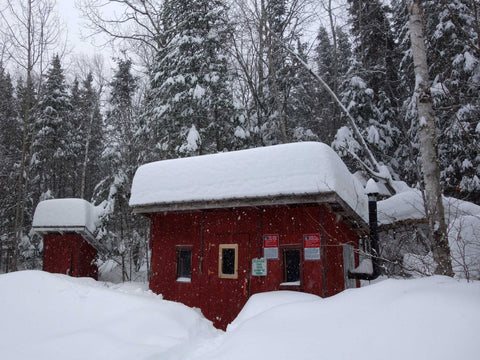
On the fourth day we journeyed from Elliott Lake back to Espanola, again with excellent snow conditions.
It took a while to clear the snow off of our trucks and trailers (shown below) before we could load our machines back into their trailers.

We spent the night in Espanola and drove home the next day. Our snowmobile adventure was challenging and fun, and we very much enjoyed the camaraderie of our longtime friends. We feel lucky to live where we easily can access world-class snowmobile trails for winter getaways.
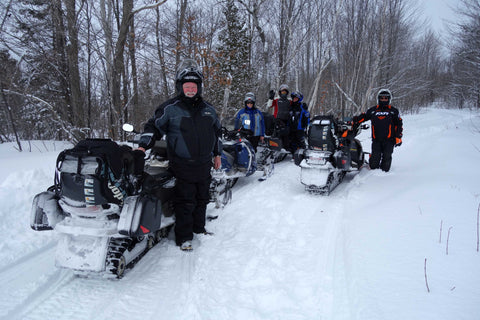
One of the excellent side benefits of these extended trips is that I have access to gorgeous wilderness scenery, to take photos I can use for painting ideas. Shown below are a few of the paintings that resulted from years of snowmobile adventures. Click on the photos for more details about theses pieces.

Snow and Stone, watercolour 16 x 12"

Winter on Lake Kashwakamak, watercolour 11 x 14"

February Flow, watercolour 18 x 24"

Cabin in the Snow, watercolour 9 x 12"

Wild Wonders - Lynx, watercolour 22 x 15"

February Farm, watercolour 5 x 15"
What do you do to enjoy the outdoors in winter? If you have comments you wish to share, please do so using the 'Leave a Comment' button at the top of this post.
Subscribe to Karen's Newsletter for exclusive early access to new work, studio news updates, travel tales, painting tips, and notices of upcoming exhibitions.
